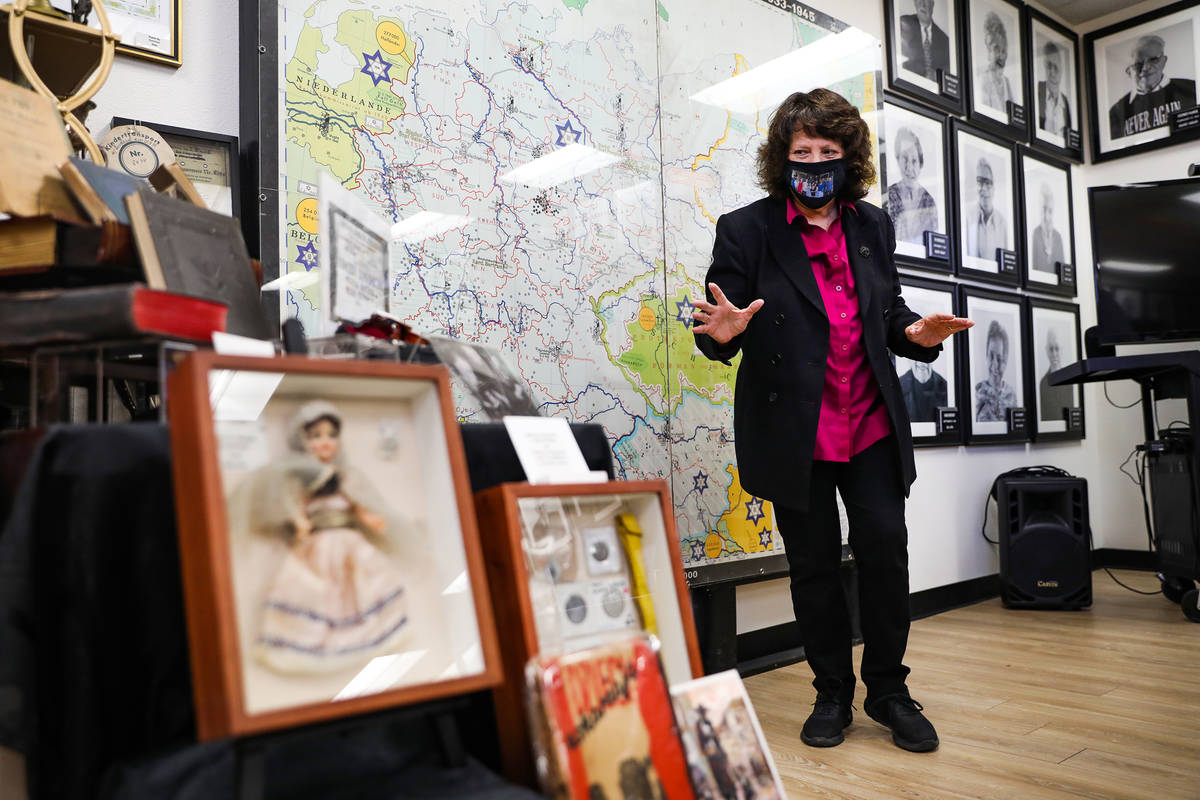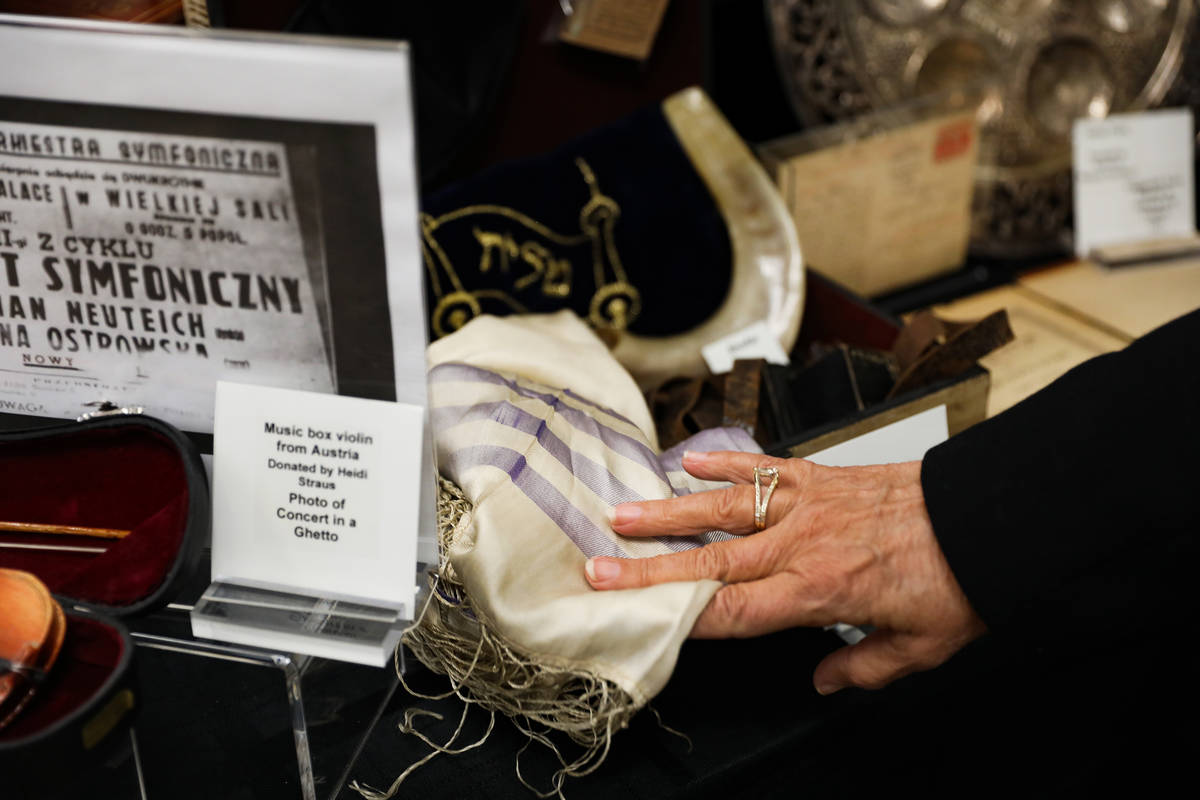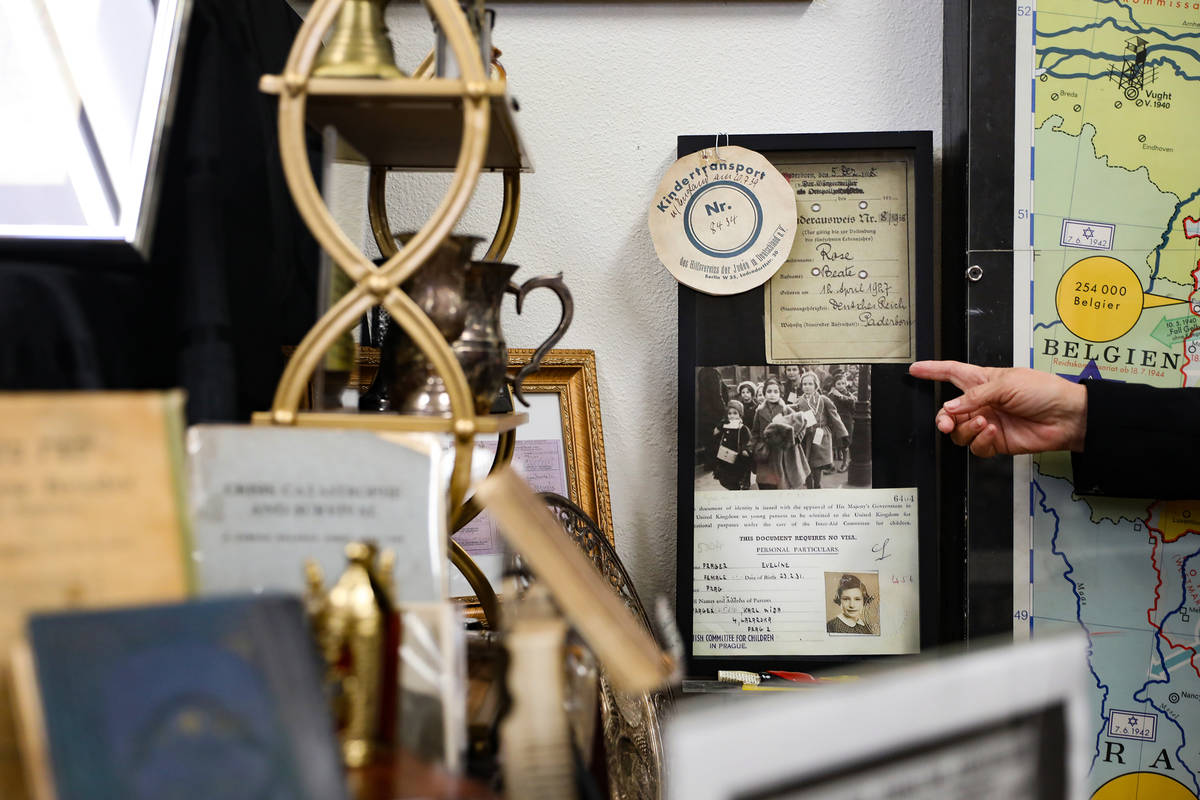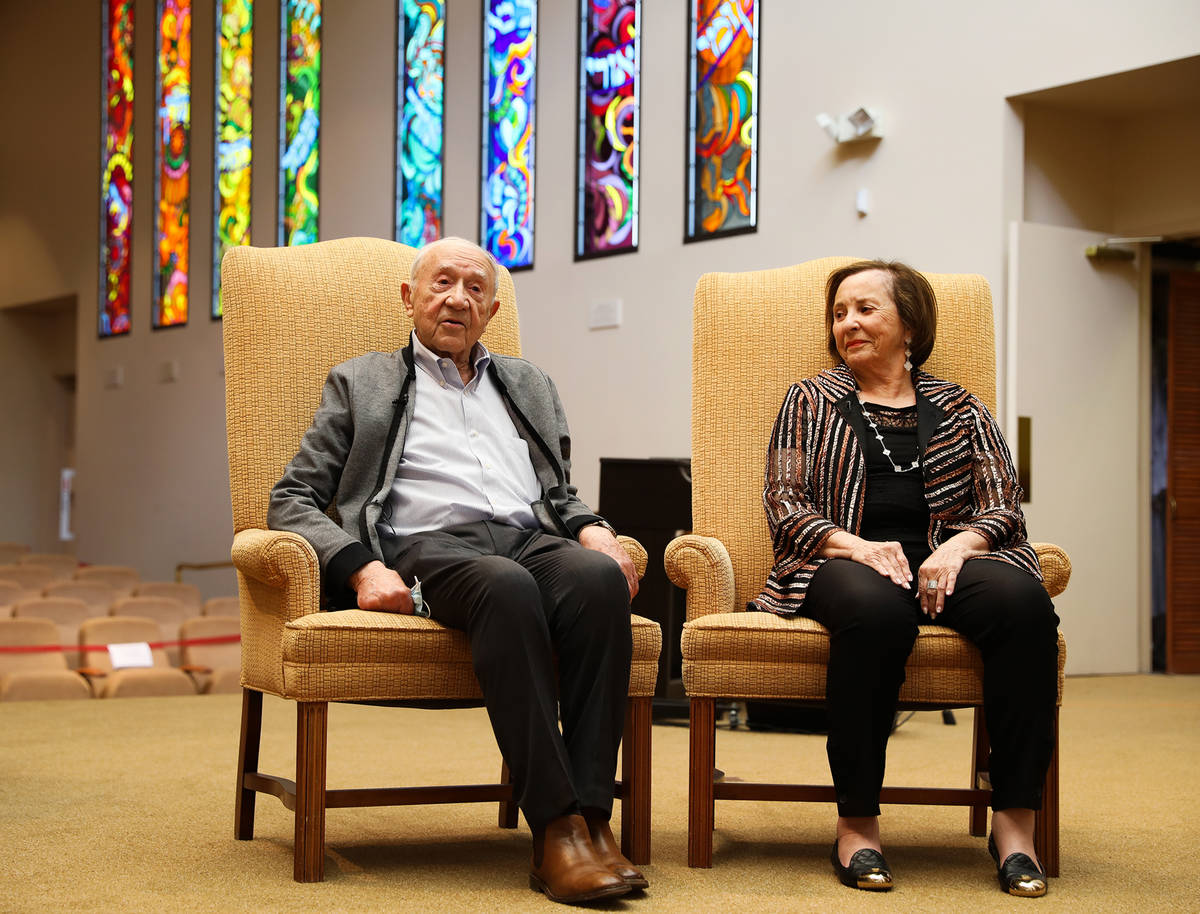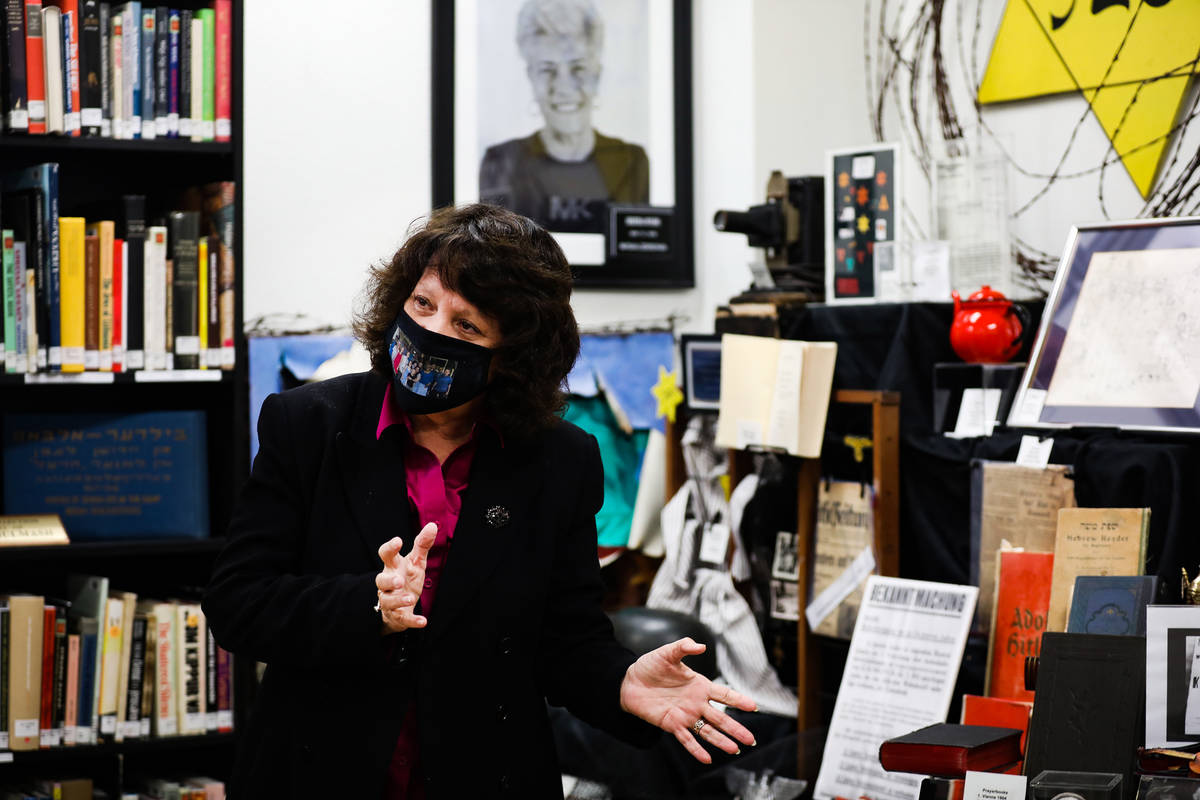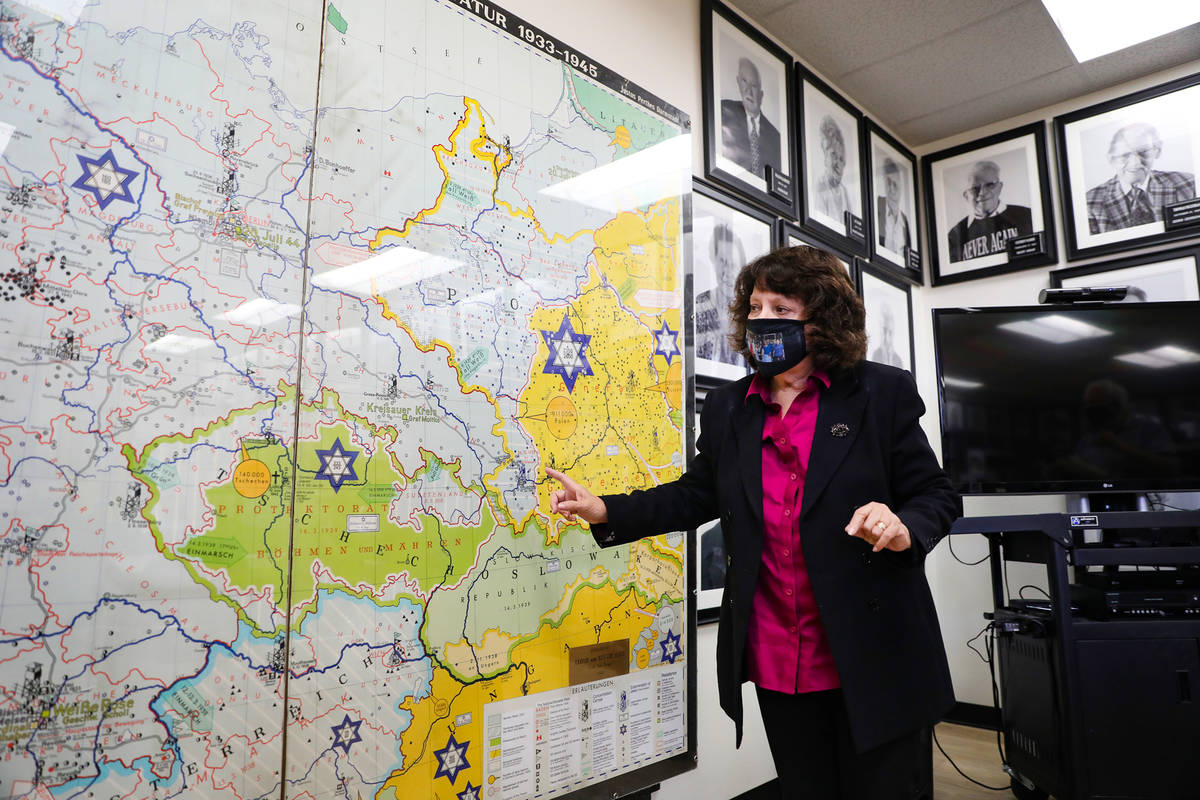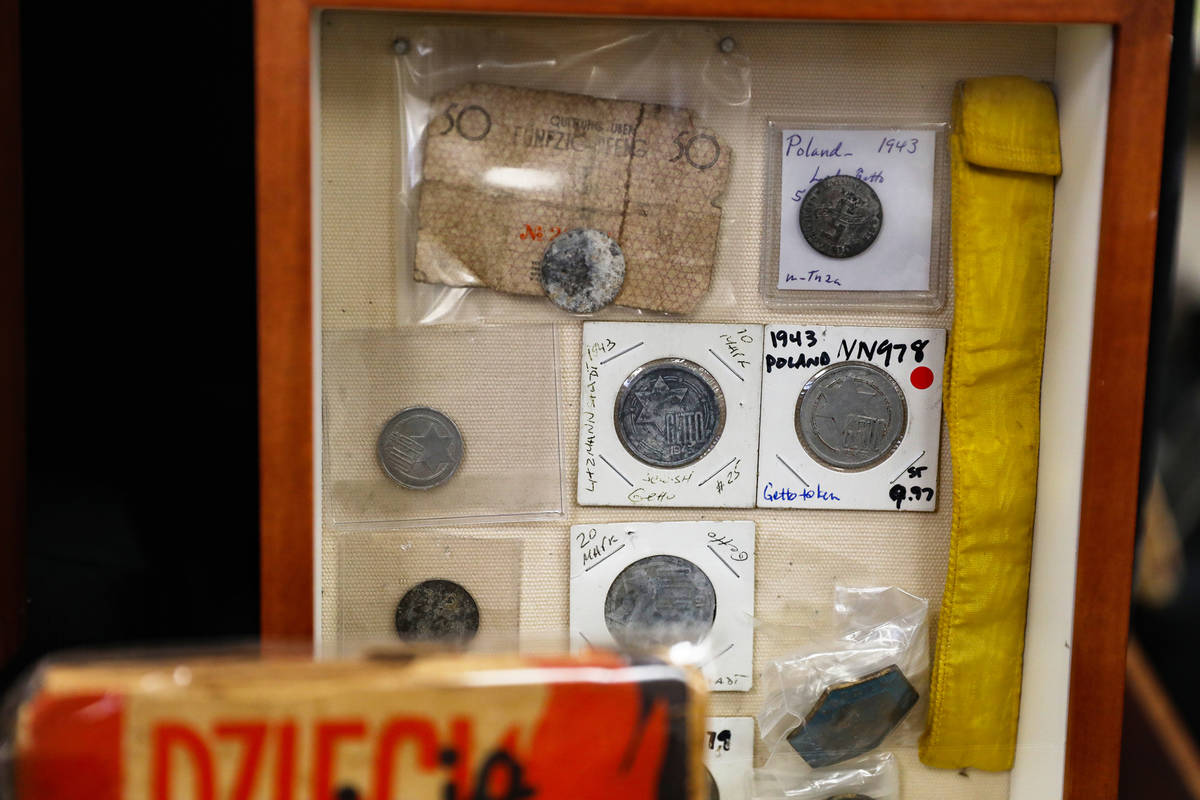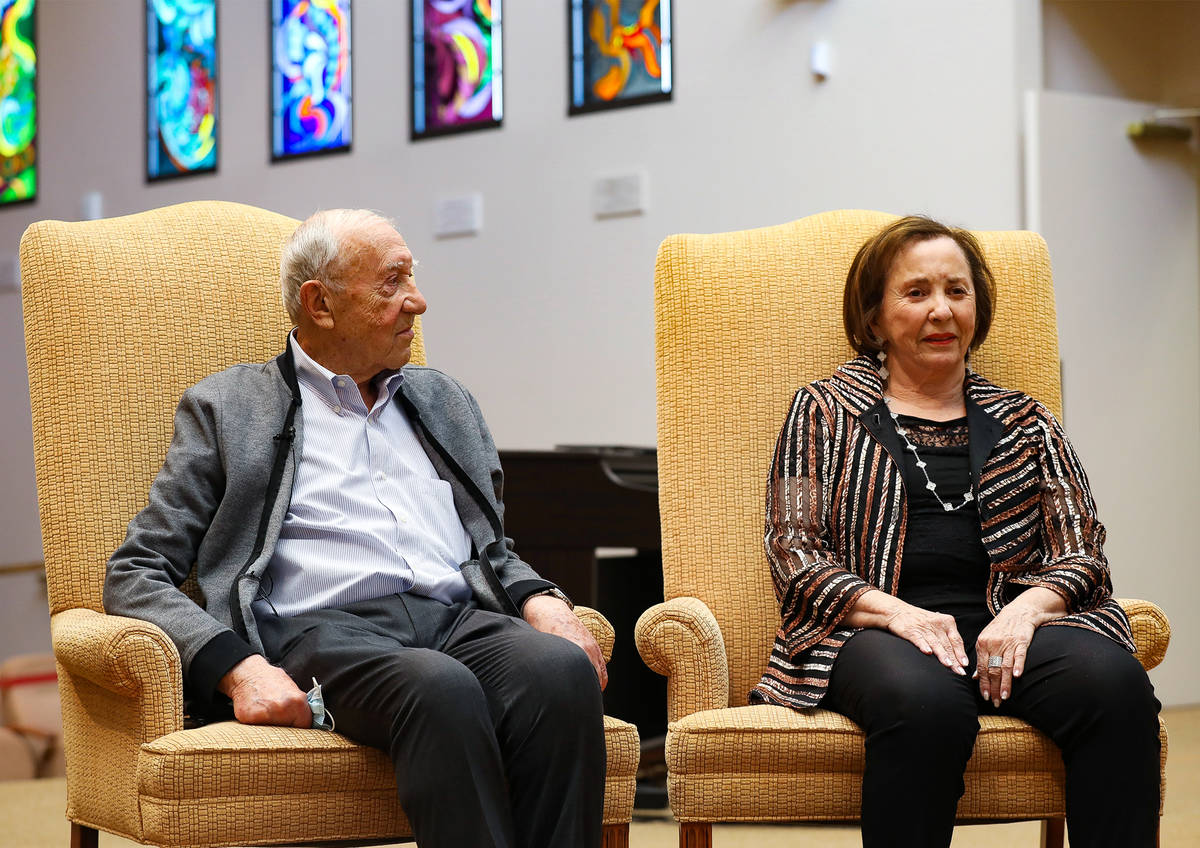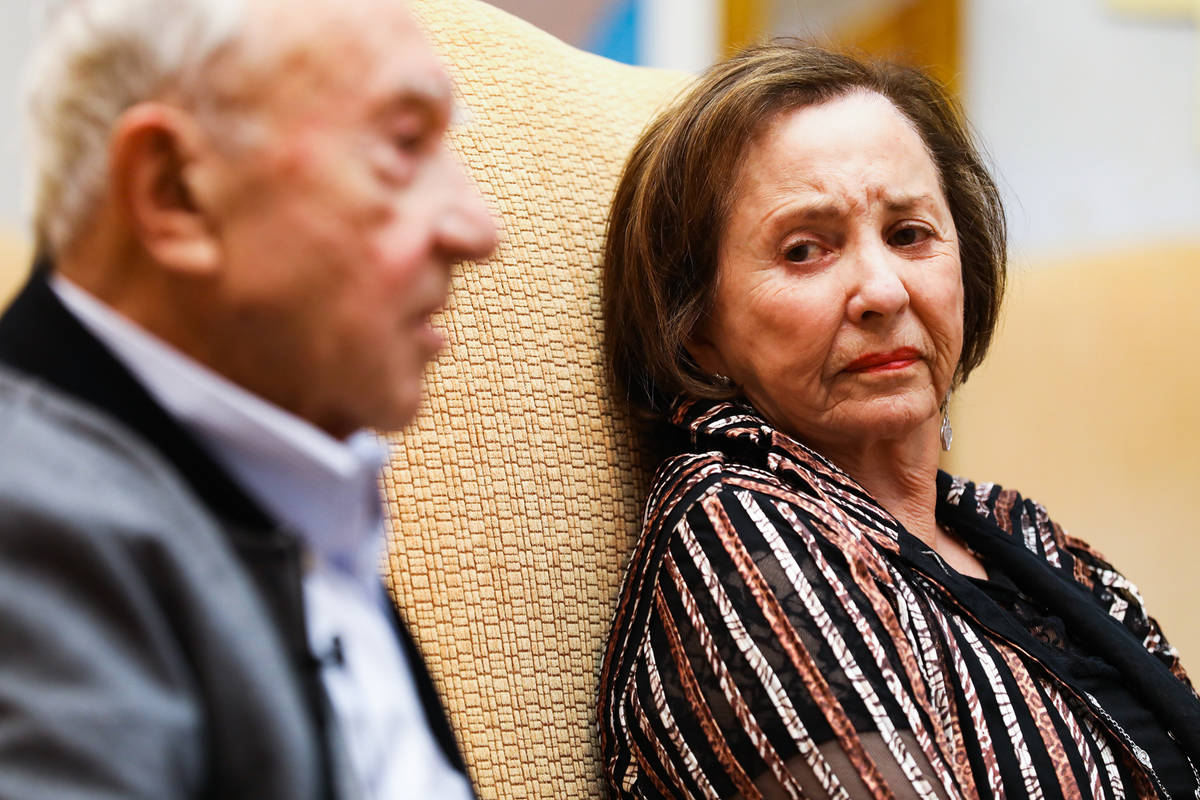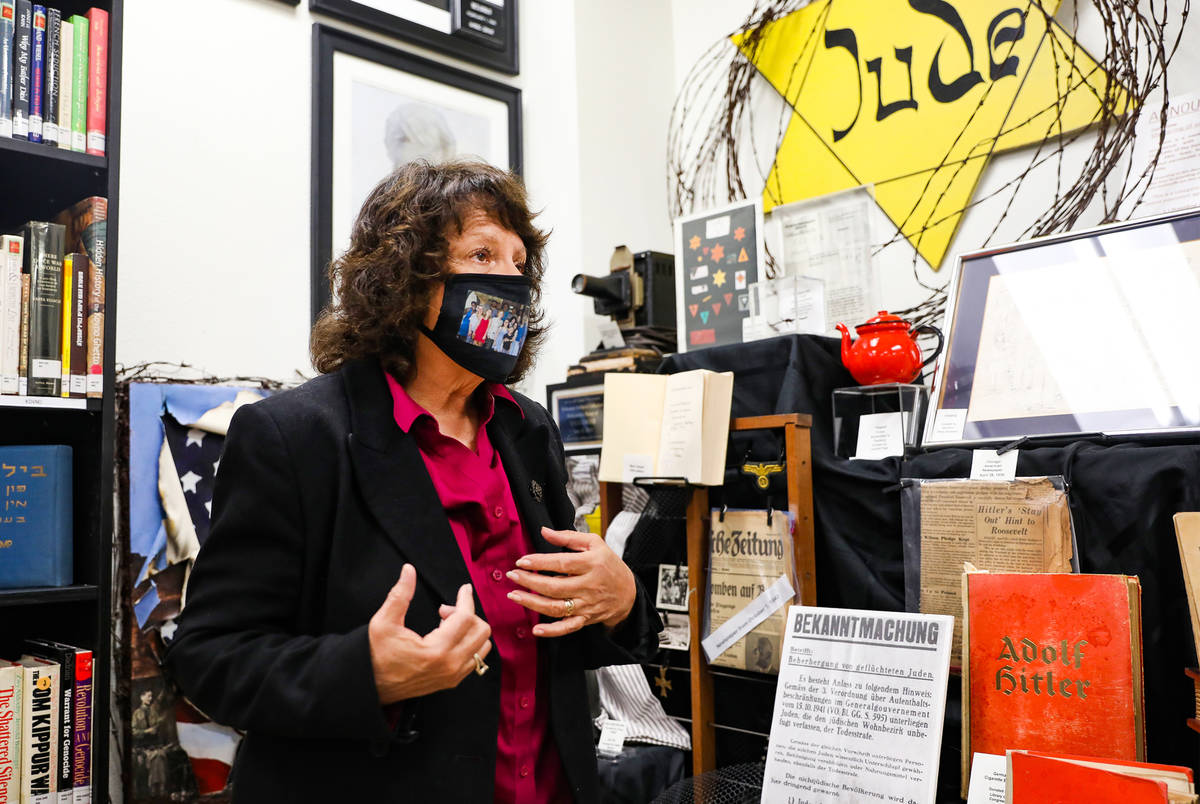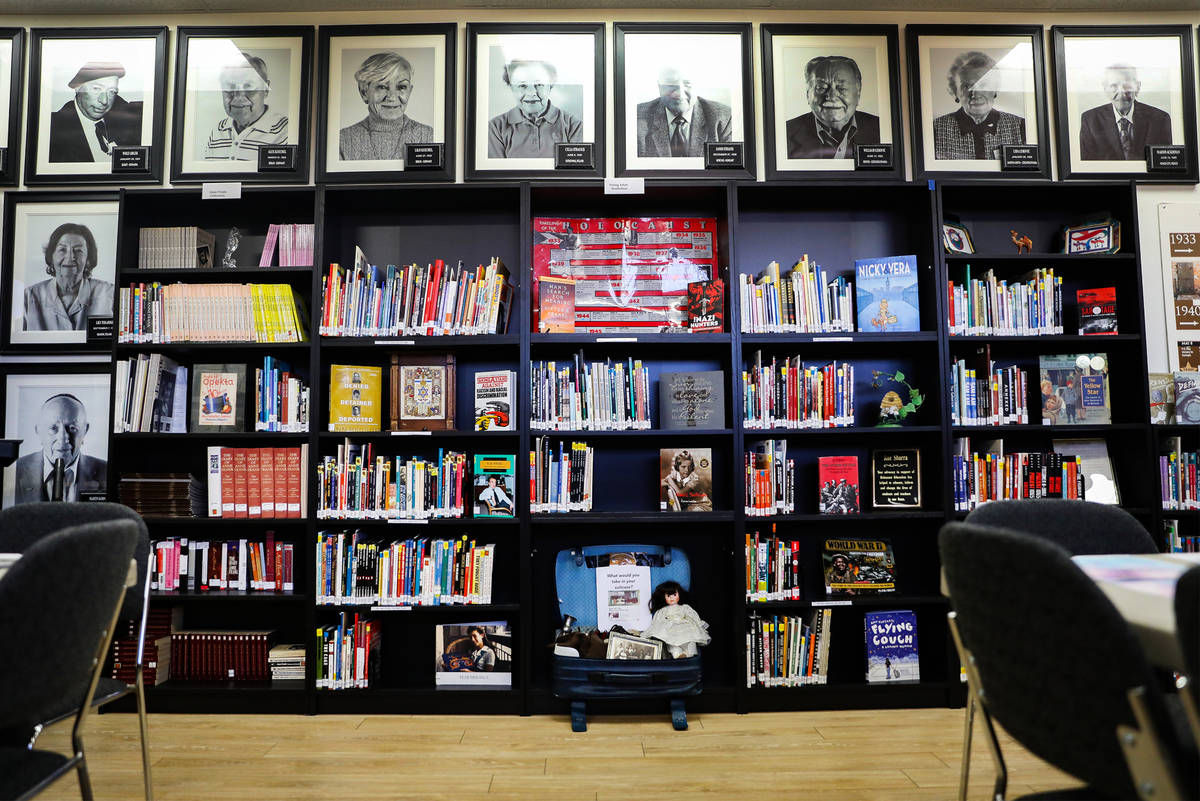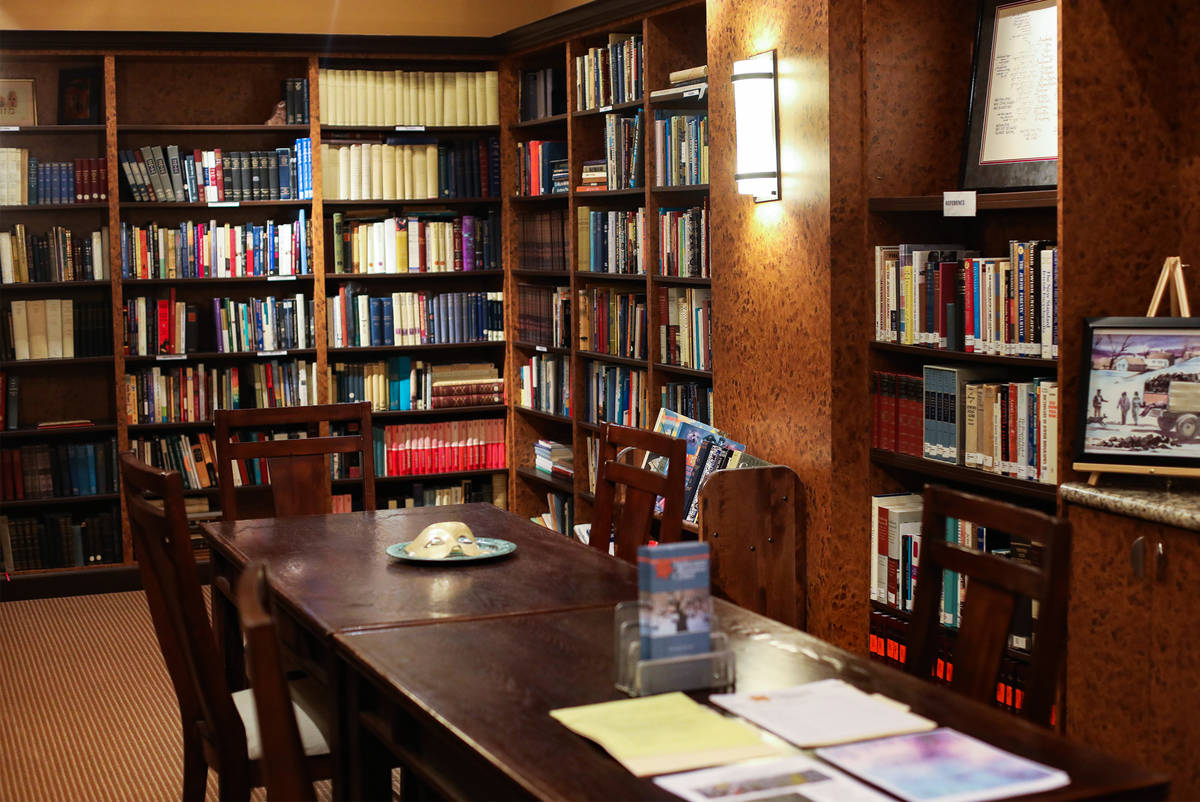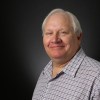On Holocaust Remembrance Day, center devoted to prevention hails new home
Hanging on a wall of the Sperling Kronberg Mack Holocaust Resource Center is an oversize map that notes the location of every concentration camp in Nazi Germany and surrounding countries during World War II.
The notations that extend from border to border form a stark, disquieting image. But hanging above it and encircling the room are images of another sort: portraits of 63 Southern Nevada Holocaust survivors, many of whom are smiling, that convey triumph and hope by focusing not on the dark days of the Holocaust but the brighter days that followed.
The resource center, whose purpose is to prevent anything like the Holocaust from ever happening again, will celebrate its move to a new home at Temple Beth Sholom, 10700 Havenwood Lane, with a 4 p.m. ribbon-cutting ceremony Thursday.
It’s a fitting day, because April 8 also is Yom Hashoah, Holocaust Remembrance Day.
“It’s wonderful. Very exciting,” said Judy Mack, a Holocaust survivor and one of the center’s founders. “It’s a wonderful location, and everybody that comes to Temple Beth Sholom loves it.”
The center was established in 1980 with an endowment from the family of Lloyd and Edythe Katz in honor of her parents, Gertrude and Hyman Sperling. A few years later, donations from Lillian and Henry Kronberg and Judy and Ron Mack funded a media center for the collection, which relocated to Temple Beth Sholom in November after being housed at other locations in Southern Nevada.
Susan Dubin, the center’s library director and education specialist, said the center’s collection consists of about 5,000 items, including books, maps, photos, paintings, movies and DVDs.
One mission of the center is to advise teachers how to instruct students about the Holocaust. But the center also is open to members of the public, who may borrow items for up to three weeks, Dubin said.
While the collection’s primary emphasis is the Holocaust, it also includes materials about general Judaica, World War II, racism and discrimination. Adult fiction and nonfiction and materials for children and young adults are available, Dubin said.
“I don’t recommend sharing Holocaust stories with children younger than fourth grade. They’re not ready,” Dubin said. “It’s obviously a very upsetting, disturbing period of history, and it can be traumatic for children.”
But Dubin said younger children can explore such themes as loss, separation, prejudice and compassion that will prepare them for more focused learning about the Holocaust when they’re older.
Even a brief walk through the center offers eye-opening revelations. That wall map of concentration camps invariably surprises visitors, Dubin said. “Most people are familiar with the big camps … but they have no idea.”
In one corner of the center is a collection of Holocaust artifacts, including a Passover Seder plate, a German army helmet and medals, an album containing photographs of Adolf Hitler’s homes — and even a tea pot from Oskar Schindler’s factory that was presented to the center by Leopold Page.
“We are not a museum, but these are artifacts given to us by survivors,” Dubin said. “I encourage people to touch them. I want people to understand these are real things.”
Co-founder Henry Kronberg, a Holocaust survivor, said the center’s work is vital. He spent much of his postwar life avoiding talking about his experiences.
“I never wanted to bring it up,” he said. “It was tough for me. I had dreams about it.”
Then, when the film “Schindler’s List” was released, “all of a sudden I changed my mind,” he said. “Know what? If I didn’t talk about it, people will say it never happened.”
Now, he said, “I hope we have more teachers who are willing to teach it.”
Co-founder Judy Mack is particularly pleased that the center’s new home is at Temple Beth Sholom. Her family has been members there since the ’60s, she said, so “it feels like home.”
Contact John Przybys at jprzybys@reviewjournal.com. Follow @JJPrzybys on Twitter.



